Story and Photography by William Edgar
At first it seems a medieval jousting field of honor, a time-travel panorama of knights and steeds flanked by peaked tents and smoke from roasting meats. Missing here, though, are armor and lance, and at least some of the ancient chivalry. The horses are not flesh but metal—steel, iron, alloy, carbon fiber—on wheels, not hooves. Ages after Sir Walter Scott’s 12th Century Ivanhoe, this is The Quail Motorcycle Gathering of year 2011. Welcome to it.

This being a more lengthy “walkabout” than succinct event report, I nonetheless commence with the organizers’ welcome words for what this event is, then move on to the beating heart of the day itself, to the motorcycles and the people.
This is the Third Annual Quail Motorcycle Gathering held May 14th, 2011 at the Quail Lodge Golf Club on the Monterey Peninsula in Carmel, California. As the event’s program opening page makes known: “We are convened today because of a common interest in these remarkable machines, and to honor significant marques from around the world.” Co-founder with The Quail, car and motorcycle collector Gordon McCall sees The Gathering as “an event that keeps hitting all the marks” and in so doing has become extremely popular with enthusiasts. In just three years, it has earned its place among the most prestigious of motorcycle show events.
Not to keep secret what is by now already known to enthusiasts, this year’s Best of Show honor belongs to Gene Brown of Denver, Colorado for his stunning 1938 Brough Superior SS-80. [A complete list of class winners and special awards presented for 2011 is found at the end of this article.]

Mr. Brown’s English Brough is a drop-dead icon of motorcycle dignity. But a machine, too, that prompts his own sense of humor. From the awards ramp came the winner’s words: “I was going to get married, and when that didn’t work out, I started collecting bikes, but every time I told this story somebody in the back row would say either ‘You made the right choice!’ or ‘It’s cheaper!’” Though Brown had been looking for a different bike to add to his small but first-rate stable, he was directed by conversation to this SS-80 formerly owned and restored by Herb Harris, the renowned collector-builder proprietor of Harris Vincent Gallery in Austin, Texas.
Harris, it so happens, is the third of three former owners of “The World’s Most Famous Motorcycle”—a 1948 bike that I, too, once owned—namely, “The John Edgar Lightning”, a 2011 Quail featured exhibit.

To keep a long yarn as short as possible, this is the Vincent HRD Black Lightning prototype that Rollie Free rode to set the American Class “A” speed record on Bonneville’s Salt Flats back in September 1948. For his final two passes through the AMA timing lights, Free had stripped to skin tight swim trunks for less drag than his torn leathers, resulting in this Vincent thereafter being popularly called “The Bathing Suit Bike.” It is still referred to by, I must proprietarily say, that asinine moniker. But call it what you will. My father commission England’s Philip Vincent and Phil Irving to build the motorcycle as a record-breaker, and that this earliest Black Lightning indeed did, with Free laid flat out, head against the tank, posting a 2-way average speed of 150.313 mph over six decades ago.
Twenty-four years later, with John Edgar’s death, I inherited legal title to what my father and I had always simply called “The HRD”, and in 2001 that original certified ownership was passed on to Herb Harris who’d restored the Vincent to its Bonneville trim, now known by its official name, The John Edgar Lightning. In December 2010, car-and-motorcycle collector William E. (Chip) Connor purchased this “JEL” from Harris, and delivered it here to The Quail for display at this 2011 Motorcycle Gathering.
From record-breaking to the road racing, The Quail this year also celebrated “A Century of Racing at the Isle of Man,” arguably the hairiest of open road motorcycle racing from its first running in 1907, and was a conquest for America’s Indian motorcycles a century ago in 1911. Isle of Man historian Paul d’Orleans, who also co-emcees this Quail Gathering, wrote of that distant time in this year’s program, noting, “Indian was the only American manufacture to send a racing team abroad in the first 75 years of motorcycling.” Michael T. Lynch extended that history in the event program to include more recent Isle of Man achievements by legendary Giacomo Agostini and Mike Hailwood.

Winner of The Quail’s “Isle of Man Award” is this 1925 New Hudson Factory Racing machine owned and entered by Paul Hudson. Imagine flogging a bare-bones single like this over the 37-mile Mountain Course back in the day when an average speed for the famed TT’s then torturous public roads was a harrowing 60 mph!

Far from that famed isle in the Irish Sea is a downtown Los Angeles loft where 38-year old designer-engineer Ian Barry, with his business partner/fiancée Amaryllis Knight, creates his one-off Falcon motorcycles. Their company’s 1952 Vincent Black Shadow-motored handmade “Black Falcon” won this year’s Custom/Modified Through 2011 Award at The Quail for owner Chad Findley. I’ll have more later about the innovating motorcycle artistry of Barry and Knight.

With an eye for beautiful bikes and skill to help put The Quail Motorcycle Gathering together—Event Director Courtney Porras Ferrante, always on her cell, is a tireless coordinator making the show happen with McCall and Courtwright. “We work so hard on this all year,” says Ferrante, “and it brings this to life.”

“Now being our third year we are really getting in stride,” says co-emcee and motorsport author/historian Lynch, who works closely with the event’s Chief Judge, Somer Hooker, well know to collectors and as a recent judge of motorcycles at Pebble Beach. Hooker tells about his own 30 motorcycles that include “a bunch of Vincents” as well as Ducatis, older BMWs, and early Japanese bikes. Alluding to his judgeship, the big man from Tennessee says, “I’m very non-discriminatory.”
Lynch informs there was no judging at The Quail Motorcycle Gathering until this year. “We had special awards before,” he says, “but a lot of people said they wanted to have judged classes, so we’ve assembled a judging team. We are not Pebble Beach, and we are not trying to be Pebble Beach. For people who have a competitive spirit, they can now come out here for a very relaxing day and not worry that their taillight might be burned out. But they still want to have someone say that their bike might be better than someone else’s, and are willing to subject themselves to a judging process.”
When Hooker tells me they have eight people judging, I ask what his Quail Judges Committee looks for in motorcycles voluntarily submitted by entrants to be judged. “This is more like a French concours,” he says, “in that it’s a little more glamour oriented as opposed to being technically correct—like when they had the Legend Show at Pebble Beach where you are really kind of held up against the manufactures’ out-of-the-crate type of standards. This is a looser type of approach to things. We do look at the bike as far as correctness, but then we stand back and say, ‘What’s the elegance factor here, too?’”
Outstandingly here are elegant, early BMW motorcycles that share pre-WWII Bauhaus artistic influences.

To convey relevant bike info, emcees d’Orleans and Lynch take to the show field with PA microphone in hand. Says Lynch, “Paul and I talk about these bikes in everyday terms so the attendees can understand what they are looking at.” Such “everyday terms” can at times be insightful even to the shrewd bike scholar. Motorcycle admirers are by their very nature intensely focused on what they love.
Last year’s Quail Motorcycle Gathering Best of Show award having gone to a 1961 BMW R50/2, proudly entered by Tim Stafford, perhaps inspired BMW owners this year to bring more of the German marque to Carmel. Gary Lewis’ 1924 BMW R-37, plate number 37, is the second-place award winner in its very competitive Antique Through 1940 class.
Moving on to British bikes corralled alongside Brown’s SS-80 Brough and ’52 Vincent Black Lightning, I find his 1961 BSA Goldstar to have the Vincent in its tank! What owner Brown will later tell me, the BSA has only one original mile on its clock. Discovering more details on more bikes, I prowl the range of alluring machines with the curiosity of a kid in a magical land.




In bikes, I’ve always found irresistible the mix of old and new, and so stand staring at a BSA pair, always a favorite British make while never having owned one—Triumphs, Ariels, and the JEL, yes. I study how Budd Schwab’s 1921 BSA, a striking example of Sammy Miller restoration, differs from a nearby Bonhams auction bike, also a BSA, though 36 years newer and powerful Beezer statement in form of a Daytona Beach Special racing Goldstar.


This number 12 plate ex-factory Goldstar has period Dayton racing history, coming second under Albert “Slidin’ Al” Gunter to Joe Leonard’s Harley-Davidson in the 1957 Daytona 200. Bobby Sirkegian rode it as a Daytona rookie in ‘58, also racing it later at Riverside and Ascot. In his seventies, Sirkegian still owns this big tank former Daytona pole sitter. But how long can I spend thinking of those speed duels on the sand? With almost 200 bikes at The Quail, I kept moving.




If anything will stop me in my tracks, it’s David E. Neal’s 700cc red-tank 1967 Moto Guzzi “V-7” and his same-year yellow 850cc P-11 café racer hybrid that started life as a dirt bike with Norton Atlas engine in a Matchless frame. And then, moving on again, it was more Beemers. Old ones placed here and there like sparse poetry.


Gary Wasserman brought out his BMW Renn Sport Café Racer created from a 1968 R60/2 by modifying its fame and doing high performance work on the original 600cc boxer twin through lighter flywheel and crank and oversize pistons. The huge tank is period Hoske and rear sets are custom, as are the bike’s headers and exhaust. The racing front end is handmade, the brake an Italian Grimeca, and alloy fenders feature a Domi racer taillight. That shrinking red glow might be all you’d see of this bike on a dark night.


There’s something about a sidecar that stirs romantic visions of flight and fancy. Ideal for an English summer’s narrow lanes is Theresa Worsch’s immaculately turned out 1932 BSA W32-6, complete with luncheon wicker for that genteel pause in a motorcycling day’s escape from the mundane. Intended for sidecar use, this Brit “Beeza” and its 499cc side-valve single with tank-mounted hand shifter epitomizes the height of a prewar sidecar craze in the British Isles.


Thirty years on, postwar Germany’s BMW 1963 R69S carried this 2-tone Steib sidecar in swifter, but still elegant, passage. I was expecting to see a sidecar class at The Quail, but found it regrettably missing, at least for this year’s edition. A treat to behold, as well as other sidecars present, is Brent Hansen’s black and green chariot bred for the road to adventure.
And then there is “The Creamer”—the Harris Vincent Gallery red delight that’s motored about by a Vincent Touring Rapide, both dressed for the ride in matched cream upholstery and all-together unbearably enticing. In his company’s esteemed span of restoring Vincents, Harris has done two Red Rapides before, and this third one here, he says, “is conceived with flair.”


Situated at the hub of The Quail’s lush show field, “The Herb Harris Camp”—as I take liberty to call it—is a sort of theater proscenium in itself. I ask Harris about the red Vincent and sidecar and, as usual, his gracious response is rich in detail.
“I ran across this Blacknell Bullet sidecar and bought it,” Harris says. “Vincent made some bikes, not a lot, in red, a very powerful bright red. They also made a few bikes, not many at all, with a cream sort of upholstery. I thought the combination of those two would be perfect. They were stock Vincent colors, so we set out to restore a Touring Rapide with this Blacknell. When we got into it, we found a serial number off of a Vincent Black Shadow on the Blacknell, so this sidecar was originally installed at the Vincent factory on one of their bikes, listed in their catalogue as a ‘sports option’.”
The sidecar restoration was intimidating, but worth it. Says Harris, “It has an extensive wooden frame in it, and every joint was loose, so it was like a bundle of sticks rattling around inside a sheet metal can, and this sidecar took almost as much time as the motorcycle did to restore. Vincent never made a red bike with cream upholstery and a sidecar, but on the other hand it’s all spec correct. It’s a numbers matching Rapide. We went down to the crankshaft and replaced all of that, and we’ve never had an engine failure on one of our bikes. It all came together well, and it says something that I like to say about our company.”

Ever looked inside a Vincent’s heart? Not likely. But here you have it—in Harris’ Series “C” Black Shadow Works Sectioned Engine. He tells me about this “King of Cutaways”—assuredly the best one of only three V-twin Vincent sectioned engines ever built, this one being the only example in private hands. Another, belonging to the Monarchy, resides in the British Museum, and the third is kept in cherished respect by the Vincent Owner’s Club in England.
“The amount of sectioning is spectacular,” says Harris about this rarity among motorcycling jewels. “It’s cut all the way down into the very epicenter of the engine and the paint is the original British stove enamel.” Built for 1950’s All British Car & Motor Cycle Exposition in New York, Philip Vincent personally brought the engine to the U.S. After trading hands at high levels, Harris eventually acquired the distinguished cutaway. “I take good care of it,” he says, “and make certain that it’s treated with respect.”
And there’s more to see that Harris has brought to the show. It is, as I say, theater, and this stage is his.


“This is a very special Black Shadow,” says Harris, about to start the straight-piped V-twin liter bike for a gathering crowd. “It was made from the racing engine built at the factory in 1952 as a spare engine for their world record breaking Vincents.” Herewith an intriguing story unfolds. “This bike and engine then went to Vietnam in the 1960s,” he says, “and got traded to an American pilot by a blackmarketeer. I saw it on eBay as a bitsa and I did the research on the engine and found out what it was. Nobody knew.” Moving around the bike, Harris says, “Look at the carburetors hanging off of it! They look gigantic! It’s an original Vincent racing engine and we only put in new valve springs, and piston rings.”
Harris isn’t going to foot crank this steadfast Shadow—no way. He’s put an electric starter in it. “I’m glad I did,” he says, his decision based on intimate knowledge of these HRDs. “People love to see Vincent motorcycles not start,” he adds with a laugh. “They get a big kick out of that. My customers don’t like to be ridiculed, and that’s why I do the electric starter, so they can get on with the fun and not be the center of attention for a bike that won’t start.” Rrrrrrrrrrrrrrrah, it goes with its tuned 2-inch straights!
Heading for The Quail’s BBQ lunch, all part of admission, I find another Red Rapide, sans sidecar, then again come across Gene Brown’s Black Lightning, that at least tames an appetite for ribs and chicken. Brown doesn’t fire up his Vincent, but tells me about when the sound of it almost landed him in jail for a weekend.



Biker food galore is the self-serve delight of those 1500 or so present, a figure that includes over 150 Checkered Flag members that Club Chairman Bruce Meyer brought along from the Petersen Automotive Museum in Los Angeles. “Pal” to so many enthusiasts from car and bike worlds alike, Meyer is “The Man” here nearly everyone knows.
“We’re converting them to motorcycle lovin’ guys and gals,” Meyer says of his Checkered Flag car bunch, “and this is fantastic! Car collectors now are looking very hard at the collectability of motorcycles. It’s the way we all started, with hot rods or bikes, Doodlebugs and Whizzers.” Hooked on everything with wheels, Meyer’s annual Father’s Day Rodeo Drive Concours June 19th in Beverly Hills is this time all about Italian cars and motorcycles—to be reported on here in Sports Car Digest by yours truly.


Coming across twice AMA Superbike—and three-time World Motorcycle—Champion Wayne Rainey over by the custom bikes, I ask him about what he sees and feels here at The Quail. “You look at all of these bikes,” Rainey says, “and you notice the passion for motorcycling and all the different styles of bikes from all the eras—you get it all. Every year it’s like I’m coming to a motorcycle show for the first time, and it’s well worth the effort to get here.”
What Rainey points out is particularly true with new custom and one-off bikes that make their debut, or hold their stand, on The Quail show field.

It couldn’t be more graphically illustrated that cars and motorcycles are DNA-connected, today more so than ever before. Unveiled next to the SO-CAL Speed Shop’s cool hot rod roadster is the equally cool, and hot, new 2-wheel creation called the “Miler”—as in a dirt track’s mile oval. The 865cc, 78 horsepower Triumph Bonneville-motored bike in lightweight frame, reminiscent of flat-track Triumph racers of the ‘60s and ‘70s, drew crowds all day long at The Quail. Says the bike’s associated Terry Karges, “The Miler is street legal, that’s the intention, and we’re excited. We are So-Cal Speed Shop, Mule Motorcycles, and Streetmaster Motorcycles, and are selling under the umbrella of So-Cal Motorsport, a new company we have set up to take these three brands to market—special edition bikes with a whole parts program for them.” Take a look.
There is, in fact, a wide developing world of custom and modified motorcycles on display at The Quail that hark back to bikes loved years ago.






Everybody knows Mert Lawwill, 1969 AMA Grand National Champion and co-star with Steve McQueen and Malcolm Smith in that be-all end-all of motorcycle movies, On Any Sunday. Here’s Lawwill at The Quail—with his Mert Lawwill Concepts “Street Tracker” he’s custom designed and built to recall Harley-Davidson’s TT race bike. Of the limited edition 19 examples Lawwill built by hand, this one was specifically made for Indy 500 winner Danny Sullivan as a birthday present from Sullivan’s wife Brenda. Powered by Harley’s 1200cc Sportster V-twin, the Lawwill bike features Buell forks, along with dual swingarms of Mert’s own design based on his innovative mountain bicycles. Go hard on the throttle with this stormer and the back end goes up, not down, movin’ on out. Lawwill’s dirt-bred Tracker carves canyon pavement in dazzling style.

A conceptual master, Mert Lawwill has also developed prosthetic throttle hands, and is now working on a prosthetic elbow, for handicapped riders.
Because they are smaller than cars, motorcycles fit easier and more economically into the broad spectrum of what can be done with a wheeled machine to make it infinitely special. Here again is the 1952 Vincent Black Shadow-powered “Black Falcon” creation designed and engineered by Ian Barry, met earlier with Falcon business partner Amaryllis Knight.
Where to begin on something this fabulous? “It all starts with a beautiful engine,” Barry tells me. “When you see it, you almost figure that this would have been a drawing or schematic of some mad scientist that never got built because of the expense, but they made it! But I didn’t want this to be just a Vincent tribute bike. I wanted something that I could make from all areas of my imagination that exemplified what we know now.”



Knight, bringing her lithe English accent from London, has her own take on what Ian’s and her work is, and has become, through their paired focused efforts. “We work with what was originally there,” she says, “and take those elements as far as we possibly can, as far as our imagination allows while honoring the soul of where it came from. It’s a passion, and it’s an obsession, but it’s also great great fun.”
Barry and Knight work on one Falcon motorcycle at a time. Of their three at The Quail, I learn that each took about a year to build. Collector, historian and worldly wise motorcycle connoisseur, Paul d’Orleans, astride this Triumph-based one-off, has insight into these Falcon customs. “Ian has a series of motorcycles he calls ‘The Concept Ten’ that are all based on British engines,” says d’Orleans, at home in both Paris and San Francisco, and here at The Quail. “He waits until he has a customer, then he starts building. I think the next one they will do is based on the Brough Superior engine. He’s a motorcycle fabricator first, but the sky’s the limit. It’s really impossible to convey how much detail there is, how much clever thought has gone into re-making everything on these bikes. I tell people, it’s like something that’s familiar but has re-emerged through a parallel universe where they’ve had a lot more time to do things.”

Could there possibly be more to see here at The Quail? How about some of these other custom bikes?



Now we come to what could be called a leading manufacture’s custom, Ducati’s brand new Diavel Carbon Testastre II that David Stone brought to Carmel from Wisconsin. The Italian street beast is a power cruiser with sports handling genes and switchable engine mapping that offers its rider a choice of either 100 or 162 horsepower. Better believe it before turning the handle.

Continuing an association with The Quail, Bonhams & Butterfields is here with its “Exceptional Motorcycles and Related Memorabilia” auction that includes fashionably classic BMWs to kick-ass Steve McQueen Husqvarna Motocross bike. What caught my eye before even stepping inside the Quail’s Club House Ballroom auction was this Valentino Rossi replica, the champ’s bedazzled vision of a YZF-R1 Yamaha.



By contrast, indoors is the marked seriousness of item lots, auctioneer, and the infectious pondering of a next, possibly winning, bid. Bikes of profound collector interest, and others appealing to the capricious gamut of imagination, either find new homes or remain with present custodians. Being there and surrounded by this see-saw sense of anticipation and disappointment triggered in me a reaction akin to vertigo.




An impressive figure was paid at the Bonhams auction for this cool McQueen machine “understood to be the very motorcycle featured on the front cover of the August [23] 1971 issue of Sports Illustrated” that in photograph showed the muscular, bare-chested 41-year movie idol riding hell-bent on his pegs, front wheel lifted, an unforgettable image of the man and the marque.
Just below, outside on the grassy grounds of The Quail, something else was happening with motorcycles and entrants in this Carmel Valley afternoon fortuitously passing from overcast to sunshine. And in some inexplicable way, the nonchalance of this four-legged attendee brought me back to the reality of the show field where class winners were already bringing bikes to the ramp to receive their awards.




Of course, we anticipate the announcement of Best of Show winner, and a cheer comes up when Gene Brown, a collector of seven outstanding bikes, rides his Brough Superior SS-80 up the ramp to accept his prize from the event co-founder of both the Motorcycle and Motorsports Gatherings at The Quail, Gordon McCall. “Our goal,” he says, “is to stay on track, and stay focused with producing a very high-quality motorcycle show.”
The Best of Show award is selected by The Quail Motorsports Council, showcasing the most significant bike on the field in terms of presentation and historical significance.



What Gene Brown has to tell me of his Brough Superior is hard to believe, but true. “It was a parts bike,” he says, while also making it clear that this SS-80 was a numbers matching frame and engine bike. From something once cannibalized that became Best of Show winner at The Quail, the outcome is largely due to the work of Brough restoration expert Vic Olson of Vermont, a three-year task while this motorcycle was still owned by Herb Harris.
Winding down the day, there are a few more memories of what an excellent time it was here at The Quail with bike people and their motorcycles.



Something about The Quail Motorcycle Gathering that Gordon McCall spoke of sticks with me now after the event is over. “I love diversity,” he said, “and how the different levels of interest in different brands are so deep in the motorcycle world. The idea of bringing all of that together is a little daunting, but it actually works really well at this show. On paper, with these different mindsets, it shouldn’t work, but in the end everyone’s the same. You see Mert Lawwill chatting with Ian Barry, and I absolutely love that.”
The common denominator is where McCall, and I for that matter, have always thought of motorcycles as being just as important as cars. In fact, they co-exist, even on occasion one within the other.

Lest we forget, this Saturday Quail Motorcycle event essentially began on Friday the day before, with the extra-ticket attraction of “The Quail Ride”—a group motorcycle jaunt on scenic roads of the Monterey Peninsula, ending at Mazda Raceway Laguna Seca for picnic lunch and lap go-round, along with later reception dinner and guest speakers, plus preview of the Bonhams auction. It’s the same way the Motorcycle Gathering kicks-off again at The Quail in May 2012. Says the never-tiring Gordon McCall, “I was already planning next year’s event a week before today’s began.”

The Quail Motorcycle Gathering 2011 – Class Winners and Special Awards
Antique Through 1940: C.C. Kasik, 1910 Pierce Arrow 4-Cylinder.
Japanese Through 1978: Albert Catelani, 1977 Honda GL1000.
European Through 1978: Robert Jordan, 1957 Triumph TR6
Competition Through 1978: Randolf Reed, 1961 Bultaco TSS 125 Factory Prototype.
American Through 1978: Paul Pardini, 1960 Harley Davidson Duo-Glide Super Sport Solo.
Custom/Modified Through 2011: Chad Findley, Falcon Motorcycles “Black Falcon” with 1952 Vincent Black Shadow engine. Designer/Engineer: Ian Barry.
Off Road Through 1978: Blair Beck, 1972 Penton Six-Day 125cc.
Vetter Fuel Economy Challenge Winner: Fred Hayes, 2010 Hayes Diesel MD690R1.
Cycle World Award: Richard Varner, 1966 Velocette Thruxton.
Isle of Man Award: Paul Hudson, 1925 New Hudson Factory Racing.
Innovation Award: Treven Baker, 1990 DNEPR Diesel.
Competition Sport Award: Don Emde, 1948 Indian 648 B16 Base Scout.
Design and Style Award: Frank and Elizabeth Recoder, 1966 Velocette Thruxton.
Custom Award: Terry Karges, 2011 SO-CAL “Miler”.
Best of Show: Gene Brown, 1938 Brough Superior SS-80.
[Source: photo credit: William Edgar, www.edgarmotorsport.com]


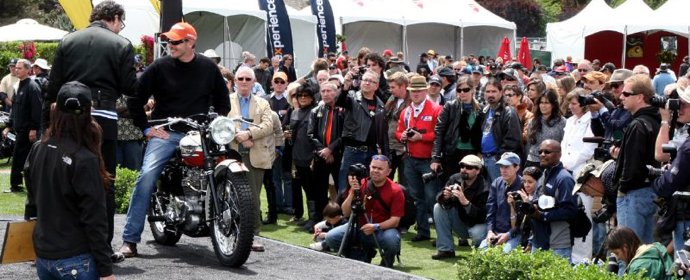

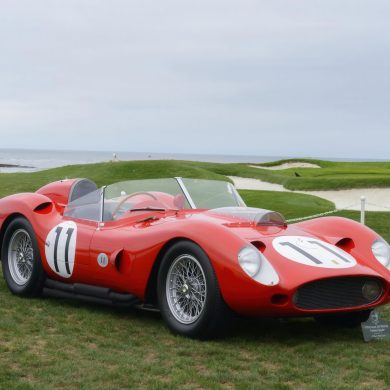

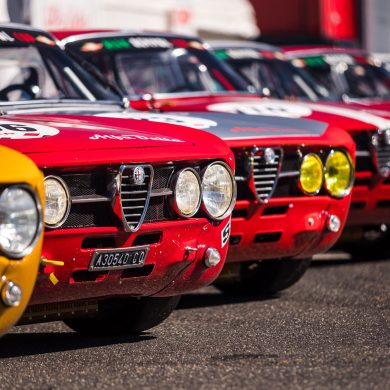
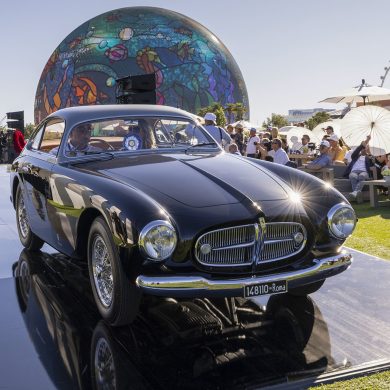
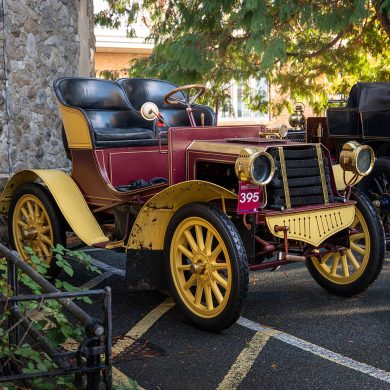


Boy, what lovely story telling. I really and truly felt like I was there! My ears could hear the twisting of the throttles and the taste the BBQ. Wonderful, Mr. Edgar.
Fabulous report on an incredible event. Well done Mr. Edgar! I must get there someday. Great to see So Cal’s new Hinckley-based Triumph special there as well.
Quite a refreshing insight to this event. Great over-all coverage, and brilliant photography. If only this type of reporting was present when Jared Zaugg started this much deserved Bike movement with his Legend of the Motorcycle Events. Thank you for including the motorcycle end of things.
RF.
good job bill. greetings